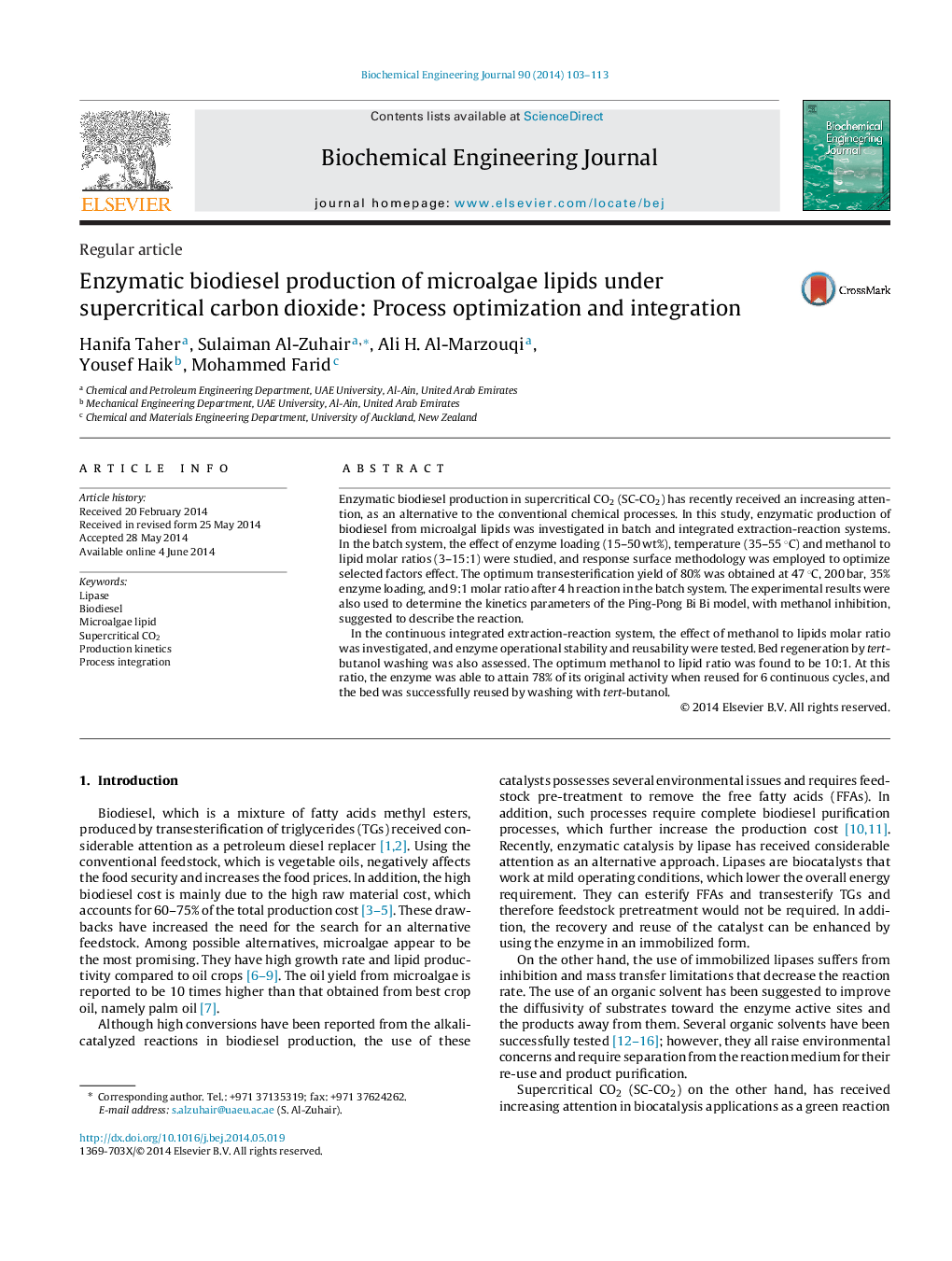| کد مقاله | کد نشریه | سال انتشار | مقاله انگلیسی | نسخه تمام متن |
|---|---|---|---|---|
| 2998 | 147 | 2014 | 11 صفحه PDF | دانلود رایگان |
• Enzymatic production of biodiesel from microalgae lipids in SC-CO2 was studied.
• Effect of temperature and methanol:lipid molar ratio were investigated and optimized.
• Kinetic parameters of Ping-Pong Bi Bi model with methanol inhibition were determined.
• Effect of methanol:lipid molar ratio and enzyme stability were tested in an integrated continuous extraction–reaction system.
• Enzyme bed activity was regenerated by tert-butanol washing.
Enzymatic biodiesel production in supercritical CO2 (SC-CO2) has recently received an increasing attention, as an alternative to the conventional chemical processes. In this study, enzymatic production of biodiesel from microalgal lipids was investigated in batch and integrated extraction-reaction systems. In the batch system, the effect of enzyme loading (15–50 wt%), temperature (35–55 °C) and methanol to lipid molar ratios (3–15:1) were studied, and response surface methodology was employed to optimize selected factors effect. The optimum transesterification yield of 80% was obtained at 47 °C, 200 bar, 35% enzyme loading, and 9:1 molar ratio after 4 h reaction in the batch system. The experimental results were also used to determine the kinetics parameters of the Ping-Pong Bi Bi model, with methanol inhibition, suggested to describe the reaction.In the continuous integrated extraction-reaction system, the effect of methanol to lipids molar ratio was investigated, and enzyme operational stability and reusability were tested. Bed regeneration by tert-butanol washing was also assessed. The optimum methanol to lipid ratio was found to be 10:1. At this ratio, the enzyme was able to attain 78% of its original activity when reused for 6 continuous cycles, and the bed was successfully reused by washing with tert-butanol.
Journal: Biochemical Engineering Journal - Volume 90, 15 September 2014, Pages 103–113
